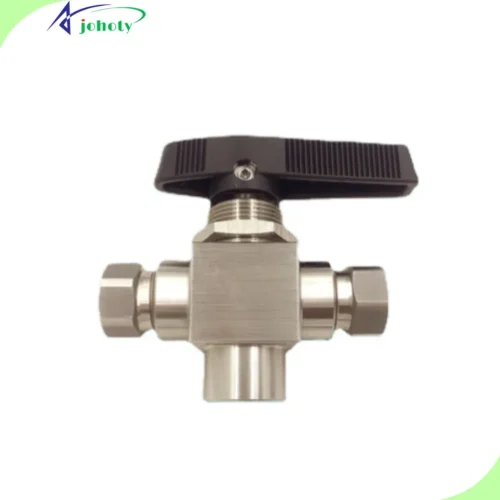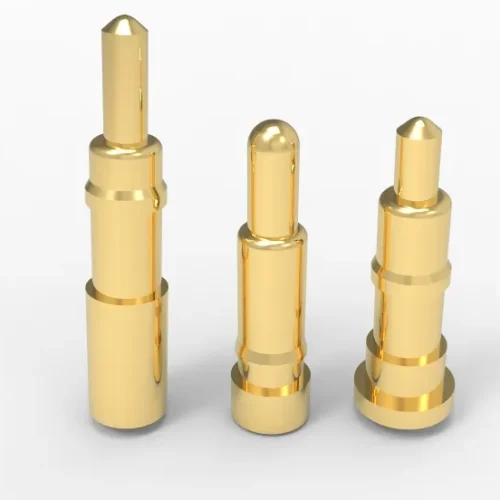How does a ball valve work? desire to stay ahead in industrial fluid control? Understanding how ball valves work is key. This blog dives deep into their inner workings, breaking down from basics to real-world applications.
How does a ball valve work? Unlocking its mechanics boosts your fluid control skills. Delve deep into understanding how ball valves operate to refine your fluid control strategies. Our blog explains ball valve functionality, offering practical insights.
In industrial fluid control, ball valves are indispensable. However, grasping their operational mechanics is crucial for enhancing fluid control efficiency. This article unveils the internal workings of ball valves, providing a clear picture to help you better manage industrial fluid systems and boost productivity.
As a customer, you need more than just products, you need a profound grasp of fluid control. With our expertise and practical case studies, you’ll optimize fluid management, boost efficiency, cut costs, and ensure smooth industrial processes. Jump into our blog and discover the newest advancements in industrial fluid management!
Introductions, how does a ball valve work
- Amidst the current industrial landscape, guaranteeing meticulous control of fluid flow is essential. Whether it’s the oil and gas field, chemical facilities, or food processing plants. That’s why ball valve has become the top choice for many engineers and operations managers.
- Renowned for their reliability, longevity, and exacting control. But do you understand how a seemingly simple ball valve operates and meets your complex needs?

In this blog post,
- we’ll delve into the workings of the ball valve, dissecting its structure and functionality. To help you better understand how this critical component operates in various industrial applications.
- We’ll not only detail different types of ball valves and their specific uses but also provide practical selection and maintenance guides. This ensures you uncover the most suitable solution for your requirements.
- Whether you’re seeking ways to improve the efficiency of existing systems. Or need a deeper understanding of the advanced technology behind the ball valve. This article will provide value.
- Let’s dive into the heart of industrial automation together. Exploring the inner workings of ball valve to ensure your systems are operating at their best

The basic structure of the ball valve
Valve Body:
- The valve body serves as the main structure of the ball valve. Usually crafted from materials like copper alloys or stainless steel, responsible for housing internal components and connecting pipelines. The design of the valve body ensures structural strength and leak-proof performance.
Ball:
- Positioned at the center of the valve body, it features a through-hole, matching the inner diameter of the pipeline. Rotation of the ball by 90 degrees facilitates opening and closing, controlling the flow or shut-off of fluids.
Valve Stem:
- The valve stem links the ball to the control handle or electric actuator. Rotation of the valve stem directly drives the rotation of the ball, with its sealing design preventing fluid leakage through the stem.
Valve Seat:
- Usually made of flexible material like PTFE, the valve seat forms a sealing interface around the ball. The quality of the valve seat directly influences the sealing effectiveness and longevity of the ball valve.
Sealing Rings and Packing
- They ensure no leakage occurs at the valve body and stem. They require regular inspection and replacement to uphold the sealing efficacy of the ball valve.
Handle
- The ball valve is controlled by the handle. The manual ball valve features a handle for rotating the valve stem. The automated ball valve is equipped with electric or pneumatic actuators to adapt to remote control or automatic control systems.
Operating principle of ball valve
Basic Operational Mechanism:
The core function of the ball valve is to control the flow of fluids using a precisely manufactured ball. The through-hole at the center of the ball is crucial for valve operation. Its diameter is typically matched to the inner diameter of the pipeline to minimize flow resistance.
Open State:
- When the ball valve handle is turned, it pivots the ball. Align the through-hole with the direction of the pipeline, fluids can flow freely. In this position, the ball valve provides minimal flow resistance, achieving a fully open state.
Closed State:
- Conversely, when the handle rotates the ball by 90 degrees to align the through-hole perpendicular. The ball turns to align with the fluid flow direction, achieving full closure, and halting fluid flow. This design allows the ball valve to quickly cut off fluid supply, making it ideal for systems requiring rapid response.
Precise Flow Control:
The ball valve is frequently utilized for applications requiring complete opening or closing. Certain designs of the ball valve, such as V-ball valves, can also be used for precise flow regulation. In these applications, the through-hole of the ball is designed with a V-shaped groove. It allows for more detailed flow control suitable for modulation rather than simple on-off operation.
Sealing Performance:
- The tightness of the ball valve’s seal is determined by the level of contact between the valve seat and the ball. The high-quality ball valve utilizes resilient valve seat materials like PTFE. It can maintain good sealing performance even during ball rotation, preventing leakage even in high-pressure applications.
Reliability and Maintenance:
- Ball valve is favored in industrial applications because its design ensures long-term reliability and low maintenance requirements. With a simple structure and few durable components, maintenance mainly focuses on regular inspection. Including valve seat wear and cleaning of the through-hole.
Types of ball valve
1. Floating Ball Valve:
- Floating ball valves feature a design where the ball is upheld by two valve seats. Enabling it to maneuver and enhance sealing efficiency when faced with medium-pressure environments.
- The ball is designed to “float” amidst the seats and is typically used in low to medium-pressure ranges. With a simple design, easy upkeep, and a modest price tag, it offers practicality.
2. Fixed Ball Valve:
- The ball within a fixed ball valve is securely anchored within the valve body by a stem and trunnion. Preventing the ball from moving, it is ideal for high-pressure operations and large-diameter installations. Capable of withstanding higher operating pressures with good stability.
3. V Port Ball Valve:
- The ball or seat of a V port ball valve has a V-shaped notch, providing variable flow control. It offers good regulating performance and is suitable for applications requiring precise flow control.
4. Top Entry Ball Valve:
- Components of a top entry ball valve are installed from the top of the valve body, facilitating maintenance and replacement of internal parts. It allows internal maintenance without removing the pipeline system, saving maintenance time and costs.
5. Fully Welded Ball Valve:
- All components of a fully welded ball valve are welded closed, ensuring extremely high sealing and durability. It is ideal for natural gas and petroleum pipelines, especially in harsh external environments.
6. Multi-port Ball Valve:
- A multi-port ball valve has three or more ports, and the ball has multiple channels that can switch between different flow directions. It flexibly controls multiple flow directions and is suitable for complex fluid distribution and mixing applications.
7. Segmented Ball Valve:
- The ball of this type of ball valve is segmented and is typically used for regulating services. It provides better flow control and is suitable for viscous fluids or fluids containing solids.
8. Plastic Ball Valve:
- The ball and body of a plastic ball valve are made of plastic materials, commonly used in low-pressure applications. It has a low cost, is lightweight, has strong corrosion resistance, and is suitable for fields. Such as chemical and water treatment.
9. Sealed Ball Valve:
- The cavity between the ball and the seat of a sealed ball valve is filled with filling material to prevent medium residue. It is suitable for hygienic or crystalline media, ensuring no residue remains in the valve.
Applications of ball valve
1. Water Treatment and Supply Systems:
- Used to regulate and control water flow. The ball valve is chosen for these applications due to its simple operation and good sealing performance. Especially in situations requiring frequent switching.
2. Chemical and Petrochemical Industry:
- Control the flow of chemicals, including corrosive and high-viscosity fluids. The V-port ball valve and fully welded ball valve are common in such applications. Because they can provide precise flow control and prevent leakage, especially when handling toxic or flammable chemicals.
3. Oil and Gas Industry:
- Deployed for managing the injection and extraction activities in oil well operations. The fixed ball valve and fully welded ball valve are common in these applications. As they can withstand high pressure and harsh environments, ensuring system safety.
4. Food and Beverage Manufacturing:
- Used for fluid control for food safety, such as processing beverages, dairy products, and other liquid foods. The segmented ball valve and plastic ball valve for low-pressure applications are suitable for this industry. Owing to their hassle-free cleaning and maintenance, meeting hygiene standards.
5. Pharmaceutical Industry:
- Control of high-purity fluids, such as handling active pharmaceutical ingredients (APIs). The sealed ball valve and plastic ball valve are commonly deployed in such circumstances. They can prevent contamination and maintain fluid purity.
6. HVAC Systems:
- Regulate hot water and cooling water systems inside buildings. The ball valve in HVAC systems is used for its quick shut-off function, helping to efficiently manage building temperature control.
7. Power Plants:
- Control steam or water flow in boilers and cooling systems. The fixed ball valve and floating ball valve are used to withstand high temperatures and pressures, providing reliable fluid control.
8. Marine and Maritime:
- Used in ship fuel systems, ballast water systems, and seawater treatment. The welded ball valve as well as fixed ball valve are ideal for marine environments. Owing to their outstanding corrosion resistance and sturdiness.
9. Mining and Ore Processing:
- Control slurry flow in thickener and flotation devices. The multi-port ball valve and V-port ball valve are common in such applications. Because they can handle fluids containing solid particles.
10. Air Compression Systems:
- Employed for regulating the compressed air flow. The ball valve is suitable for compressed air systems due to its quick shut-off characteristics and low-pressure loss.
Selection and Maintenance of Ball Valve
Key Considerations for Ball Valve Selection
1. Operating Conditions:
- Pressure and Temperature: Choose the ball valve capable of withstanding the maximum working pressure and temperature of the system.
- Fluid Properties: Consider whether the fluid is corrosive or contains solid particles. Which will determine the material selection for the valve body and internal components, such as stainless steel, copper, plastic, etc.
2. Valve Body Material:
- Select appropriate materials based on the type of fluid, such as water, oil, steam, chemicals, etc. And environmental conditions, such as indoor, outdoor, marine environment, etc.
3. Connection Type:
- Choose threaded, flanged, or welded connections based on the existing pipeline system.
4. Valve Type Selection:
- Choose the appropriate type of ball valve, such as a floating ball valve, fixed ball valve, V-port ball valve, etc. Based on the required flow control accuracy.
5. Actuation Method:
- Consider manual, electric, or pneumatic actuation based on the operating frequency and available power source.
6. Additional Features:
- Determine if additional features are needed, such as fire-safe design, antistatic devices, or locking devices.
Best Practices for Maintaining Ball Valve
1. Regular Inspection:
- Conduct visual inspections regularly to check for leaks, corrosion, or signs of damage.
- Verify that the operating mechanism is functioning properly to ensure smooth operation of the handle or actuator.
2. Lubrication Maintenance:
- Regularly lubricate the valve stem and ball using lubricants suitable for the working environment and fluid type.
3. Cleaning and Seal Replacement:
- Clean the interior of the ball valve regularly, especially when handling media containing solid particles.
- Replace worn or damaged seals and O-rings to prevent leakage.
4. Functional Testing:
- Perform functional tests regularly to ensure that the ball valve can reliably close or open in emergencies.
- Conduct system integration tests for automated ball valves to ensure the effective functioning of the control system.
5. Follow Our Maintenance Guidelines:
- Follow our recommended maintenance and parts replacement procedures to avoid performance issues that may arise from using non-OEM parts.
Troubleshooting
- Leakage: Inspect and replace damaged seals to ensure tight connections.
- Difficult Operation: Check for difficulty in valve operation due to dirt accumulation or lack of lubrication, and perform necessary cleaning and lubrication.
- Incomplete Closure: Check if the ball cannot rotate to the closed position due to wear or foreign object blockage.
Innovation and future trends in ball valve
Technological Advancements
1. Material Innovations:
- Materials for the ball valve are evolving to enhance corrosion resistance and temperature performance. For instance, special alloys and advanced plastics like PEEK.
- They can extend the lifespan of the ball valve in harsh chemical and temperature environments.
2. Surface Treatment Technologies:
- Advanced surface coating techniques, including thermal spraying and electroplating techniques. They are applied to improve the wear resistance and anti-adhesion properties of the ball valve.
- Which is particularly crucial for handling media containing solid particles.
3. Compact Design:
- With the rising cost of space, compact ball valve designs are favored. Such layouts not only economize space but also bring down expenses and weight by minimizing material usage.
Environmental Sustainability
1. Low-Emission Ball Valve:
- Developing designs for the low or zero-leakage ball valve to reduce environmental pollution in industrial processes. These designs are especially suitable for regions and industries adhering to strict environmental regulations.
2. Use of Recyclable Materials:
- Increasing the use of recyclable materials in ball valve designs to support the principles of the circular economy. And reduce carbon footprint during fabrication.
Smart Trends
1. Smart Ball Valves:
- Ball valves integrated with sensors and networking capabilities can monitor their operational status in real-time. Including pressure, temperature, and flow data.
- Transmit the data in real-time to central control systems through IoT technology. Enabling predictive maintenance and fault diagnosis.
2. Remote Operation and Automation:
- With the increasing demand for automation and remote operation. Design more ball valves for remote operation via electronic and pneumatic actuators.
- This is particularly useful in environments known for their hazards or challenging accessibility.
3. Integrated System Solutions:
- Integrate the ball valves into broader fluid control systems. Providing end-to-end solutions that meet the requirements of Industry 4.0, from fluid handling to data analytics.
Conclusion! How does a ball valve work
Ball valves are critical components to ensure the smooth and dependable functioning of industrial systems. Through the analysis presented in this article, we understand that both selecting the right type of ball valve and implementing appropriate maintenance strategies. They have profound effects on maintaining and enhancing the safety and smooth continuity of production operations.
With the continuous advancement of technology, smart ball valves and eco-friendly designs are becoming industry standards. Offering you new opportunities to improve operational efficiency and achieve sustainable development. We encourage you to leverage these innovative solutions to stay ahead in a competitive market.
If you’re looking to further enhance your system efficiency or learn about the latest ball valve technologies, please contact us. We are committed to offering personalized solutions to help you meet your business goals.













